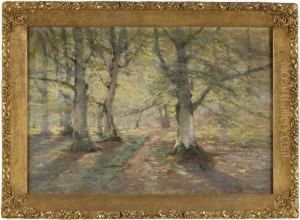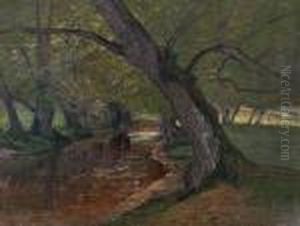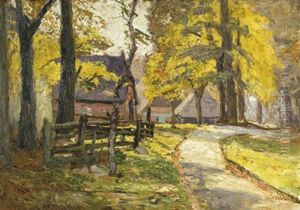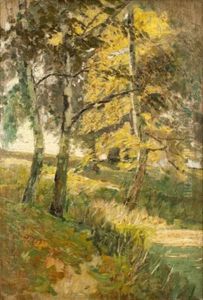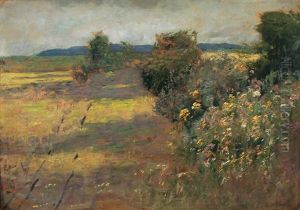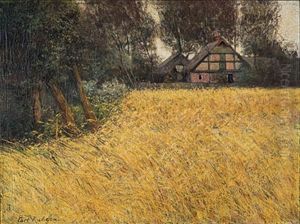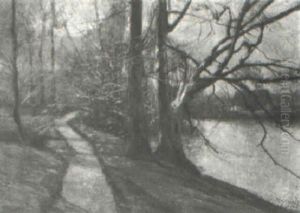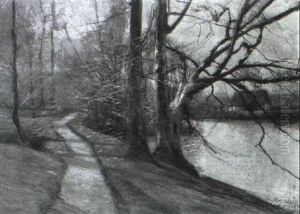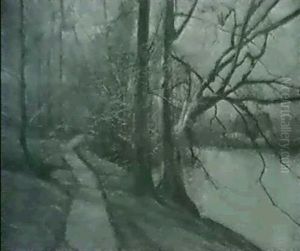Carl Rahtjen Paintings
Carl Rahtjen was an Australian artist known for his landscape paintings, etchings, and watercolors. Born on February 23, 1887, in Adelaide, South Australia, Rahtjen was the son of German immigrants, which influenced his art with a blend of European techniques and Australian subjects.
Rahtjen's early life was spent in South Australia, where he developed an interest in art at a young age. He was particularly drawn to the natural beauty of the Australian landscape, which became a central theme in his work. Rahtjen pursued his passion for art by studying at the South Australian School of Arts and Crafts, where he honed his skills in painting and drawing.
In his early career, Rahtjen worked as a commercial artist and illustrator, which helped him to refine his technique. However, his true calling was in fine art, and he dedicated himself to capturing the essence of the Australian landscape and its unique light. Rahtjen was adept in various mediums, including oil painting, watercolor, and etching, which allowed him to express his artistic vision in multiple forms.
Rahtjen's work was well-received during his lifetime, and he exhibited alongside other prominent Australian artists. He was known for his ability to depict the ruggedness and vastness of the Australian outback, as well as the more intimate scenes of rural life. His style was characterized by a strong sense of composition and a keen observation of nature, which endeared his work to both critics and the public.
Throughout his career, Rahtjen remained active in the Australian art community, contributing to the development of a distinctive Australian art identity. His work is represented in several Australian galleries and collections, testament to his impact on the country's artistic heritage.
Carl Rahtjen passed away on November 11, 1976, leaving behind a legacy of artwork that continues to be celebrated for its contribution to the visual interpretation of Australia's landscape and character. His dedication to his craft and his love for the Australian environment remain evident in the body of work he left behind.
